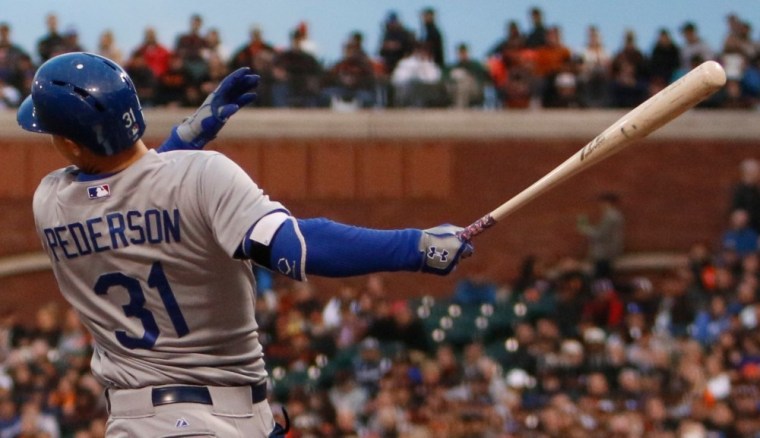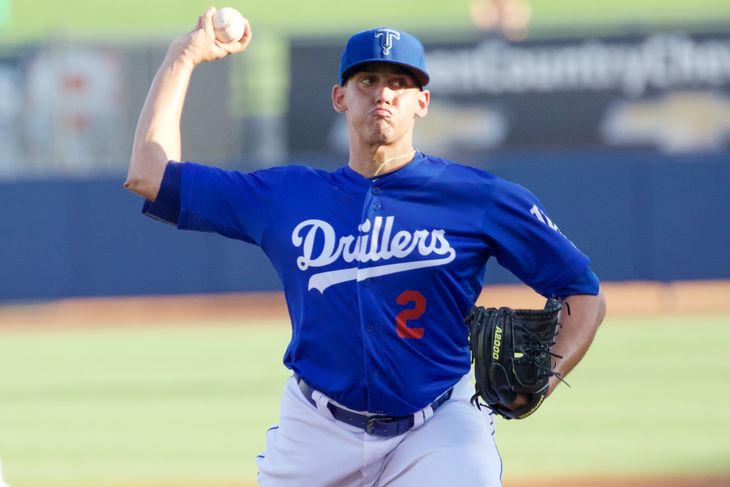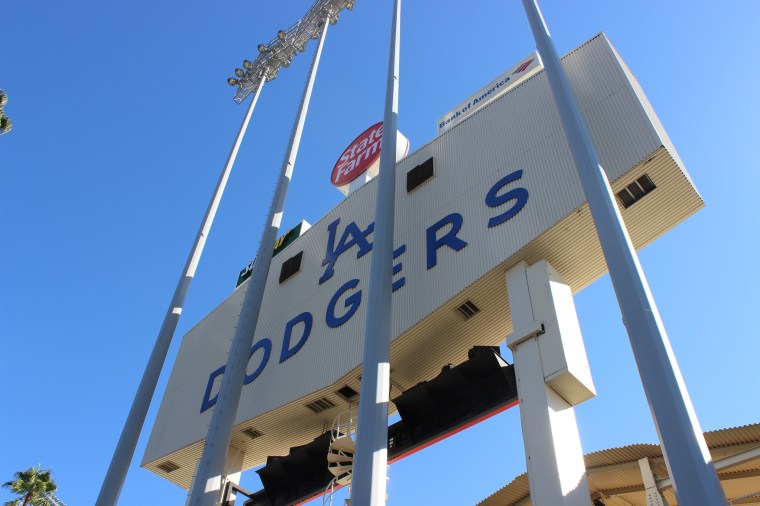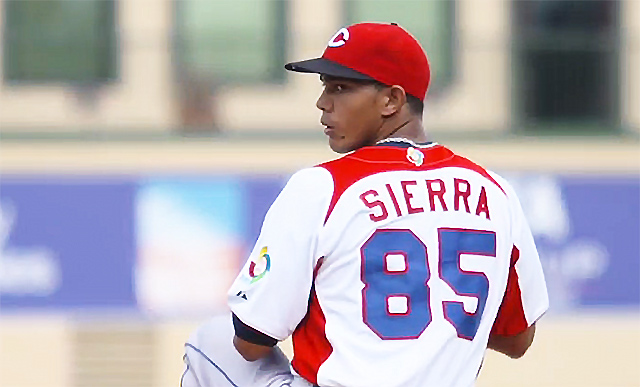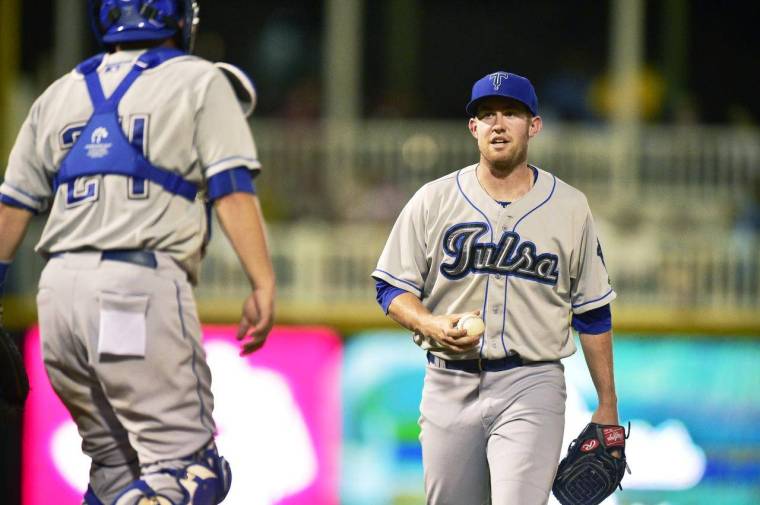
As the accolades continue to accumulate for the Los Angeles Dodgers on the prospect front, we thought it would be both interesting and insightful to have a look at the current top prospects at each position on the field.
Up until a few seasons ago, this list would have been very difficult to compile, as the Dodgers’ farm was extremely top-heavy with pitchers and outfielders. Today, as indicated by their favorable rankings by the top publications, the Dodgers not only have one of the best farm systems in baseball, but probably one of the most versatile as well.
These opinions are mostly subjective and original, and aren’t sanctioned or endorsed by any group or entity other than us here at this site. Here’s a quick peek at our top Dodgers prospects by position:
- C – Austin Barnes
- 1B – Cody Bellinger
- 2B – Micah Johnson
- SS – Corey Seager
- 3B – Brendon Davis
- OF – Trayce Thompson
- OF – Alex Verdugo
- OF – Yusniel Diaz
- LHP – Julio Urías
- RHP – José De León
- RP – Jacob Rhame
Austin Barnes is the obvious heir apparent to veteran catcher A.J. Ellis, and will most certainly see additional big league action at any sign of injury to either Ellis or Yasmani Grandal. With the catching position being one of the few spots in the organization without much depth, many say that Barnes could be one of the most valuable players on the farm. Evan Bladh of Opinion of Kingman’s Performance recently put together a quality piece that further illustrates Barnes’ value.
At age 20, Cody Bellinger has already exhibited tremendous talent both with the bat and the glove, and will have an opportunity to shine as a non-roster invitee at this season’s spring training in Glendale. Bellinger still has a long way to go as far as physical development, but he showed a bit of a power surge last season for High-A Rancho Cucamonga, having mashed 33 doubles, 30 HR and 103 RBI. TBPC compiled an in-depth profile of Bellinger back in December.
Upon being acquired from the White Sox last December, it may have been safe to assume that Micah Johnson would have probably worked his way into the Dodgers’ lineup at some point during the 2016 season. Now, with Howie Kendrick, Chase Utley, Enrique Hernandez and Elian Herrera all on call to man second base, Johnson may have to wait until rosters expand in September to make his Dodgers’ debut. David Hood of True Blue LA compiled an informative piece regarding Johnson a few months back in his Dodgers’ prospect rankings series.
Since his Little League days, Corey Seager has exhibited immense success at every single level of baseball at which he’s competed. The consensus 2016 Rookie of the Year has recently been ranked the #1 prospect in baseball by the four major publications — Baseball America, Baseball Prospectus, MLB Pipeline and ESPN. While he will be playing under a microscope, Seager certainly has the tools to exceed all expectations.
For many years, third base has been the biggest void in terms of notable prospects in the organization. The latest (albeit several years ago), most-talked about minor league player to have his name thrown around at the hot corner was Pedro Baez, who most recently found success in the Dodgers’ bullpen. Today is no exception — there’s nobody that really stands out amidst the Dodger youth. We chose Brendon Davis here, as there’s been plenty of chatter about moving him to third from his natural shortstop spot, while his 6’4″ frame continues to develop. Kyle Farmer, a catcher by trade, has also recently spent time at third in an effort to build some type of minor league depth.
At 19 years of age, outfielder Alex Verdugo is one of the younger prospects to receive early recognition. Chosen in the second round of the 2014 draft, Verdugo has already advanced to High-A ball, as he continues to impress scouts with his bat speed and strength. He has the quickness and range to man center field; yet with a cannon for an arm, may eventually profile better in right. If he ever needs to fall back on pitching, he has a fastball that has reached 94 MPH, as well as a plus curveball and a quality changeup.
Like Johnson, Trayce Thompson was acquired from the White Sox in the three-team deal last December. There’s no question that Thompson has the tools and athleticism to succeed at all three of the outfield spots; however, after seven seasons in the minors, he’s yet to take that gigantic step forward. Still, he’ll be the first outfielder called upon from OKC when additional depth is needed in the bigs. Amanda Howell of Dodgers Way took a closer look at Thompson just a few days ago.
Yusniel Diaz, also 19 years of age, was signed by the Dodgers after he defected from Cuba last April. Diaz hit .348/.448/.440 in 2014-15 as an 18-year-old in Cuba’s top league, the Serie Nacional, and was the favorite to win Rookie of the Year honors before he left the country. Similar to Verdugo, he has the quickness to primarily handle center field, but his pure athleticism gives him the capability of succeeding at all three outfield spots.
Julio Urias, another 19-year-old, has long been considered the bread and butter of the Dodgers’ farm. He made his rookie league debut at the age of 16 with Great Lakes in 2013, and outside of having eye surgery and strict innings counts, hasn’t really had any setbacks. With a fastball that occasionally touches 98 MPH, a plus curveball and a very deceptive changeup, he has all the attributes that an organization desires in an ace. Ben Ellenberg of Outside Pitch discussed Urias a few weeks ago.
Up until last summer, José De León wasn’t even on the radar of any type of prospects list. However, after perfecting his changeup and climbing through both the High-A and Double-A levels, he’s now recognized as among the best right-handed starting prospects in the game. De León’s fastball, which has nasty, late movement and sits in the 93-96 MPH range, is by far his best weapon. His slider rates a little above-average but continues to improve. His changeup is by far his best off-speed pitch — he’s not afraid to use it when behind in the count and often uses it as his strikeout pitch. TBPC profiled De León in December.
The bullpen position was probably the toughest to choose among all the spots. Because Frankie Montas — who may even be utilized as a starter in the future — has experienced a setback with rib surgery, we chose Jacob Rhame based on his arm’s electricity alone. Jharel Cotton and Chris Anderson were also considered. Rhame’s strongest pitch is his four-seam fastball which sits at 95-98 MPH and peaks at 100 MPH. He equally mixes a cutter in the low 90s that offers plenty of movement. He also throws a really hard slider, which is recognized more for its velocity than break. He’s currently working on a change-up as a weapon used primarily against left-handed hitters. TBPC took a close look at Rhame back on February 5.
As non-roster invitees, Urias, Rhame, De León and Bellinger will begin camp with the big league squad at Camelback Ranch. In Cactus League play, Urias will wear number 78, Rhame 79, De León 87 and Bellinger 61. Barnes, Johnson and Thompson, already members of the 40-man roster, will wear numbers 28, 11 and 21, respectively. Seager will wear his normal number 5.
Pitchers and catchers report on February 19 and their workouts will begin February 20. Position players report on February 24 and the first full-squad workout will take place February 25.
(Photo Credit: mlb.com)

